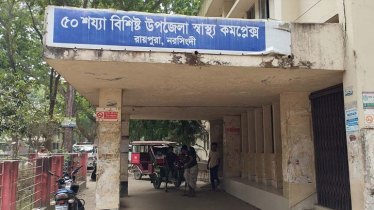
The frequent and significant damage is often attributed to poorly planned and haphazardly constructed embankments, leaving the coastal residents to bear the brunt of these recurring natural calamities. Photo: Messenger
Over the last 15 years, the coastal region of Patuakhali has endured more than ten severe floods, causing widespread damage to infrastructure and homes. From the destructive Cyclone Aila to the more recent tidal surges induced by Cyclone Remal, embankments, roads, houses, educational institutions, and businesses have been extensively affected, wreaking havoc on the local economy. The frequent and significant damage is often attributed to poorly planned and haphazardly constructed embankments, leaving the coastal residents to bear the brunt of these recurring natural calamities.
Each year, the monsoon season brings with it a wave of adverse weather, plunging the coastal communities into a cycle of loss and destitution from which they struggle to recover. The persistent onslaught of natural disasters results in significant economic and social setbacks, leaving many residents impoverished. In response to the devastation caused by recent cyclones, the government, during a visit to the affected areas on May 30, committed to constructing a more sustainable embankment. However, even with governmental assistance, the people in these regions find it difficult to rebuild their lives, remaining in a state of deprivation and displacement.
One such affected area is Chalitabunia, a union island positioned at the confluence of the Bay of Bengal, the turbulent Agunmukha River, and the Ramnabad River. Home to 14,000 people across 23.36 square kilometers, the island is protected by a 21-kilometer embankment, one kilometer of which has been destroyed facing the Bay of Bengal. According to the union’s chairman, Jahidur Rahman, the embankment has been breached in twelve places by the fury of Cyclone Remal, allowing tidal waters to flood the locality. Seven days after the cyclone, Chalitabunia had yet to restore electricity, disrupting daily life and exacerbating the hardship for its residents. Rahman emphasized that the embankment suffers breaches from tidal waves every year, and while the Water Development Board conducts emergency repairs, these makeshift solutions are often washed away by the river within a year. The recurring damage leads to continuous economic losses and increased poverty among the local population, highlighting the urgent need for a sustainable embankment.
Similar vulnerabilities are present in other areas within the district, where embankments are the primary defense against flooding. This year, Cyclone Remal has impacted approximately 84,500 families and 338,000 people. According to both governmental and non-governmental sources, the cyclone inflicted damage amounting to roughly 1 billion BDT.
The Local Government Division estimated the total damages at approximately 3.65 billion BDT, while the Ministry of Relief and Disaster Management reported that repairs and construction for rural infrastructure alone would cost about 1 billion BDT. Additionally, damages to crops were valued at around 270 million BDT, fisheries at 500 million BDT, and livestock at 80 million BDT. The tidal waves also destroyed about 23.66 kilometers of embankments in the Patuakhali and Kalapara coastal areas, necessitating around 200 million BDT for repairs. Overall, the total estimated damage is approximately 6.91 billion BDT.
In response, the Patuakhali district administration has distributed 350 metric tons of rice, 2.175 million BDT in cash, 800 packets of dry food, 600,000 BDT worth of baby food, and 600,000 BDT worth of cattle feed to the affected residents.
Executive Engineers Arif Hossain of the Patuakhali Water Development Board and Rafiqul Hossain of the Kalapara Water Development Board reported that approximately 23 kilometers of embankments in Patuakhali and Kalapara have been damaged, and a request for 200 million BDT has been made for the necessary construction and repairs.
They further explained that to build a truly sustainable embankment, the current design must be revised, requiring approval and allocation from the relevant ministries. Additionally, the process involves complex issues such as land acquisition. The lack of suitable soil in the coastal areas necessitates the use of sandy soil for building and repairing embankments, which are often washed away by normal tides. The saline environment also damages sluice gates, leading to frequent flooding. The situation underscores the urgent need for a more robust and sustainable approach to protect these vulnerable coastal communities from the relentless forces of nature.
Messenger/Fameema








